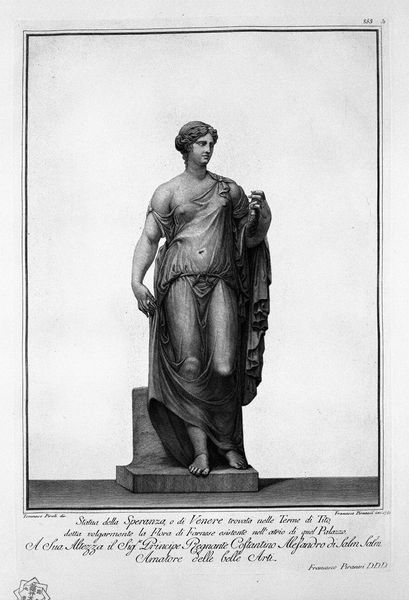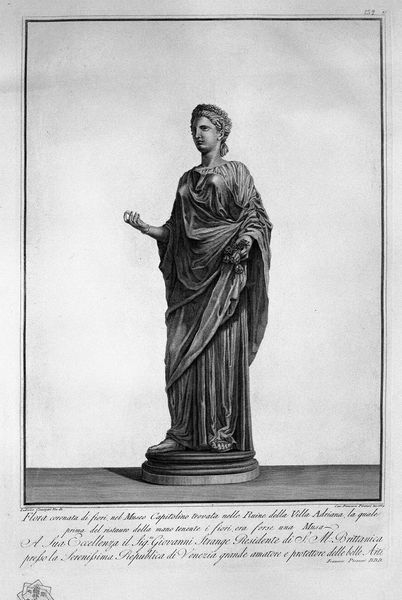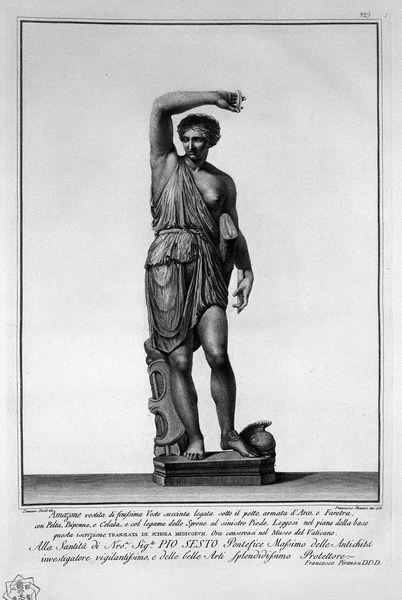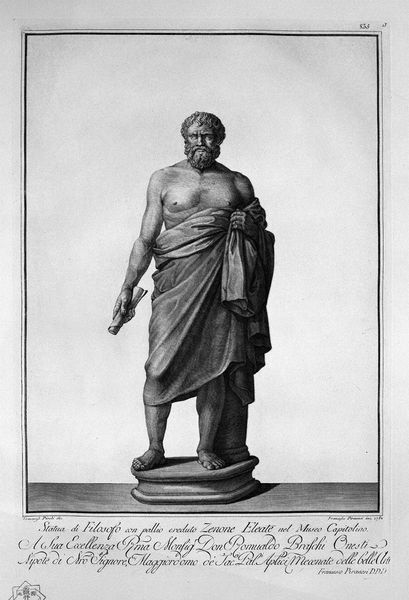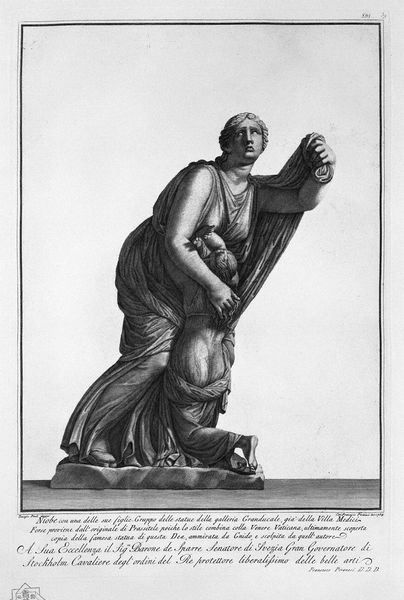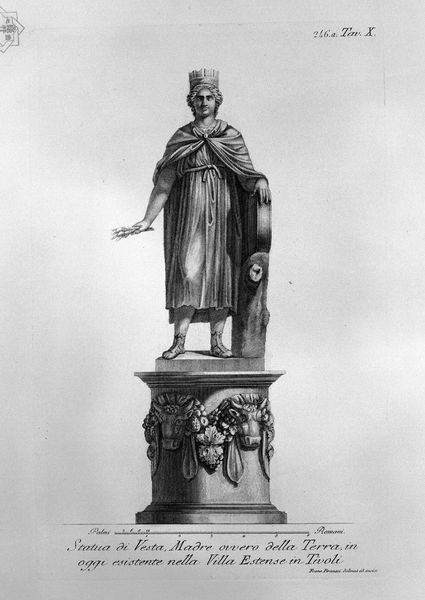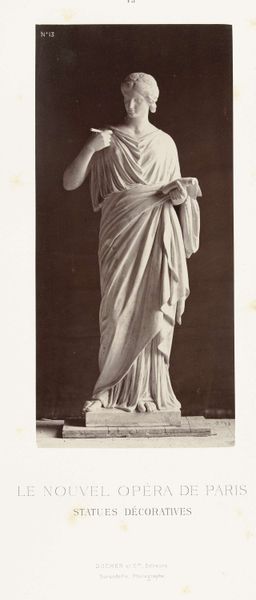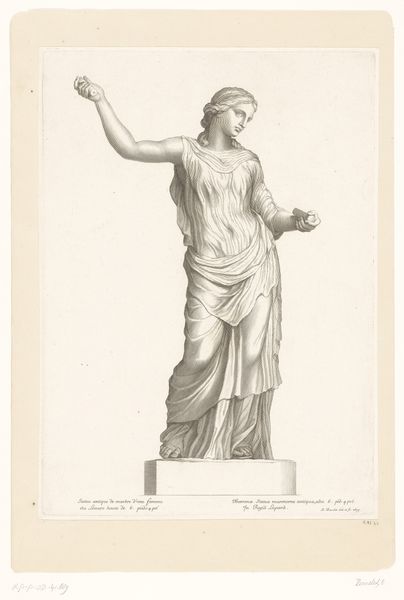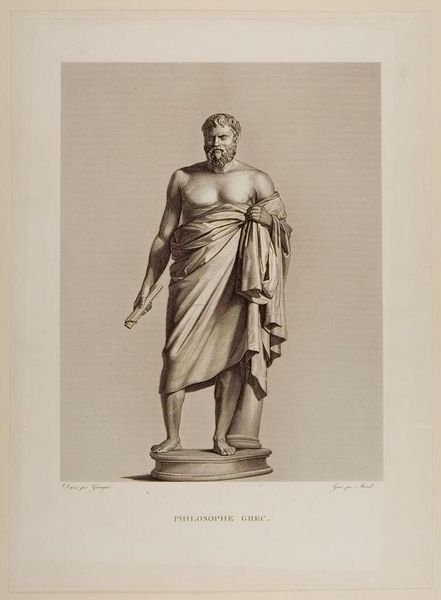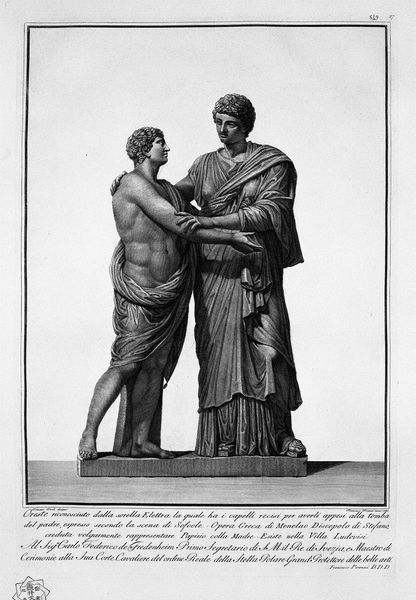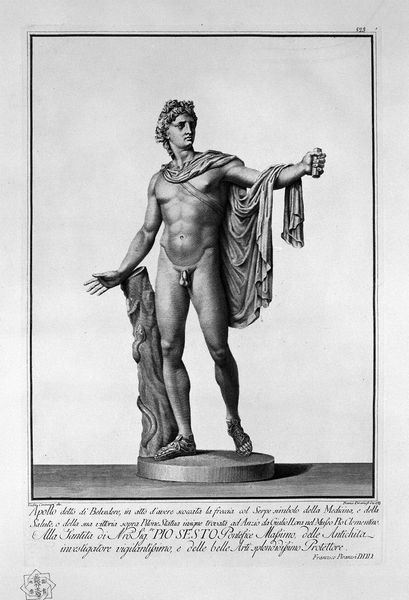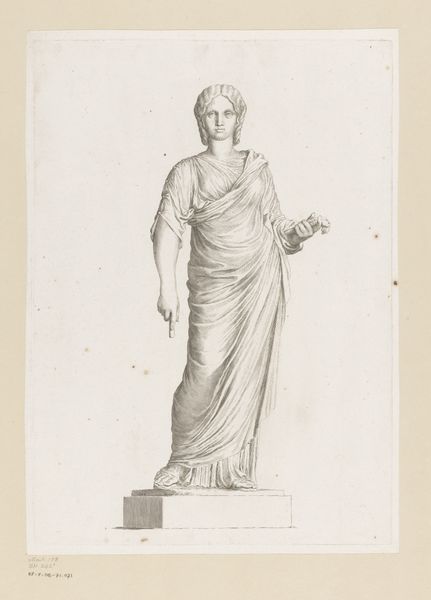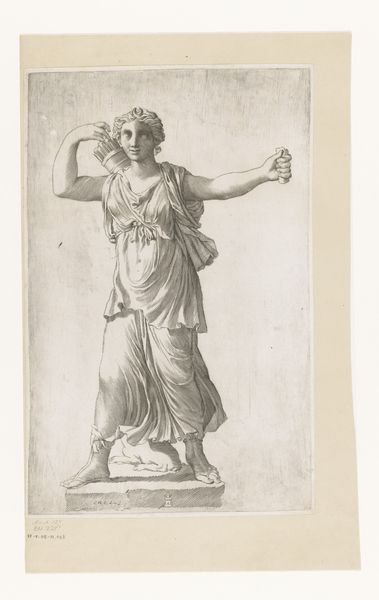
print, sculpture, engraving
#
portrait
#
neoclacissism
#
statue
# print
#
greek-and-roman-art
#
classical-realism
#
form
#
classicism
#
sculpture
#
line
#
history-painting
#
academic-art
#
engraving
#
realism
Copyright: Public domain
Giovanni Battista Piranesi created this print, "Juno," using etching—a technique notable for its crisp lines and tonal range. The statue of Juno fills the frame, and she stands on a simple, classical pedestal. Piranesi focuses on the figure, capturing the texture of draped fabric and the solid form of the goddess. Piranesi's skill lies in his ability to create a semiotic structure through the use of line and shadow. The stark contrast between light and dark—chiaroscuro—defines Juno’s form, giving a sense of depth and volume. The texture of the fabric draped around her body is meticulously rendered through fine, parallel lines, which creates a complex interplay of light and shadow. The contrast of the dark fabric with the bare skin emphasizes the sensuality and power of Juno, destabilizing the viewer's understanding of classical art and representation. Note how Piranesi challenges fixed meanings by employing a style that elevates the tactile and material qualities of the scene, connecting the viewer to both classical themes and the aesthetics of the Enlightenment.
Comments
No comments
Be the first to comment and join the conversation on the ultimate creative platform.
